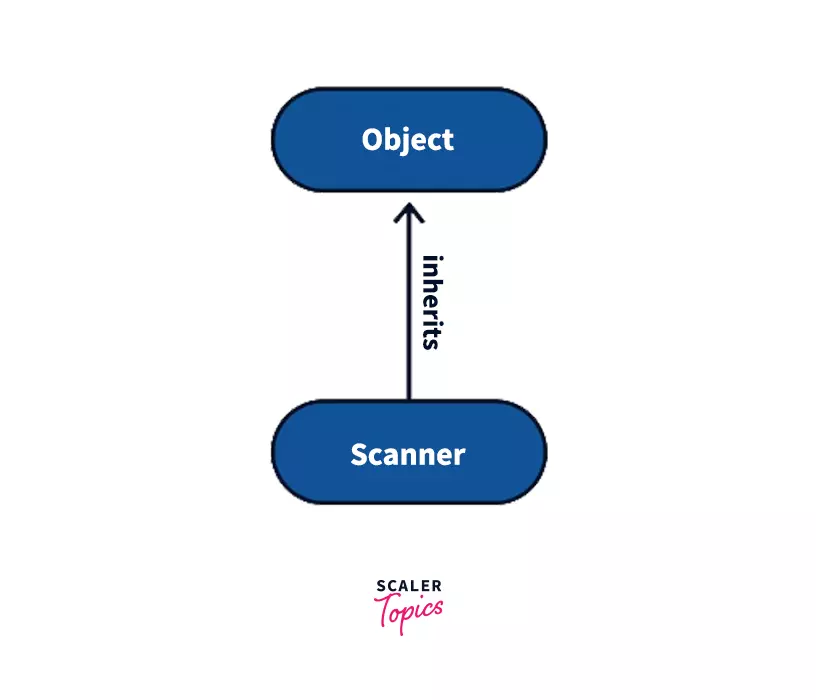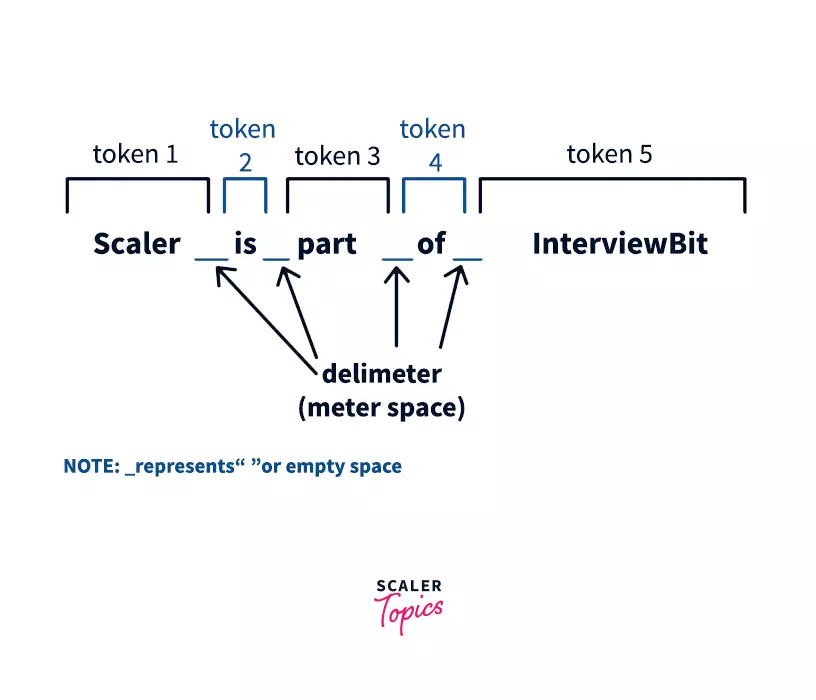Scanner Class in Java

Overview
While coding, it is often necessary to take input from users. We can do this in Java using the Scanner class, which allows us to take input from all in-built data types in Java, such as boolean, int, etc.
Introduction
Suppose you are writing a Java program and want to take user input. For example, you might want to take input from the user as an integer or float variable. For this purpose, the Java scanner class is used.
It is mainly used to read input of in-built data types like int, double, float, strings, etc. from the user. This class belongs to the java.util package. The scanner class breaks the given input into tokens/parts using a delimiter(a sequence of one or more characters that is used to separate independent values), which is, by default, whitespace. It is the easiest way to take input in Java.
The Scanner class inherits the Object class. The scanner class implements a Closeable interface(which tells Java Virtual Machine that the class can be cloned) and an Iterator interface (cursor that is used to step through the collection of objects in Java). The declaration of the Scanner class looks like this:

Before using the Scanner class you have to import the Scanner class using the import statement as shown below:
How to Make Java Scanner Class Object
To create an object of the Scanner class in java, you need to pass System.in to the constructor of the Scanner class. System is a class in Java and in is a static variable of type InputStream. System.in represents the standard input stream. Here is the code snippet for the same:
Here, the variable input represents the Scanner class object. While initializing the object input, we are passing the System.in object, which represents the standard input stream. You can use this Scanner object to call various functions the Scanner class provides.
Note:
In the above example, you are taking input from the user through the input stream, but if you want to read data or take input from the file, you can pass the object of class “File” to read the input from the file in the Scanner class constructor.
Suppose you want to take numerical input of a particular data_type. This data_type can be int, float, long, etc. For this purpose, the Scanner class provides the nextdata_type() function, where data_type is the data type of input.
You can call this function using the object of the Scanner class. For example, for taking input of an integer, you can use nextInt() function, and for taking long as the input, you can use nextLong().
If you want to take a string as input, the Scanner class provides the nextLine() method. The table below explains all these functions.
Working of Java Scanner Class
Scanner class in java reads the entire line of the input. It divides that line into tokens using a delimiter(used as a separator i.e one or more than one character that separates the string into tokens or parts).
Tokens are small elements that the compiler can understand. For example: consider an input string,
“Scaler is part of Interviewbit”
In the above string, the scanner class object will read the entire line and divide the string into tokens using a delimiter. So the above string will be divided into the following 5 tokens: “Scaler”, “is”, ”part”, ”of”, and “Interviewbit”. Now, the scanner object will iterate over each token and read each token using its different methods, which are discussed below.

Scanner class in java Methods
These are the few methods provided by the SScanner class in java to read input of various types with their description:
| FUNCTION | DESCRIPTION |
|---|---|
| nextInt() | It is used to read an int value from the user |
| nextBoolean() | It is used to read a boolean value from the user |
| nextFloat() | It is used to read a float value from the user |
| nextDouble() | It is used to read a double value from the user |
| nextLine() | It is used to read a String value from the user |
| nextLong() | It is used to read a long value from the user |
| nextShort() | It is used to read a short value from the user |
| nextByte() | It is used to read a byte value from the user |
Note:
If the user enters wrong input data, for example, in numerical input, the user enters text or string, then the user will get an exception named InputMismatchException.
Apart from the above methods to take input, the Scanner class in java also provides many other functions:
| FUNCTION | DESCRIPTION |
|---|---|
| hasNext() | Check whether Scanner has more token for input or to mark whether the input is ended. used to check whether input is ended or not. |
| hasNextInt() | It is used to check if the next token or input is of int data type or not. If that token is of int type, it will return true else false. |
| hasNextFloat() | It is used to check if the next token or input is of float data type or not. If that token is of float type, it will return true else false. |
| hasNextDouble() | It is used to check if the next token or input is of double data type or not. If that token is of double type, it will return true else false. |
| hasNextLine() | It is used to check if there is another line or string in the input or not. |
| hasNextLong() | It is used to check if the next token or input is of a long data type or not. If that token is of long type, it will return true else false. |
| hasNextShort() | It is used to check if the next token or input is of short data type or not. If that token is of long type, it will return true else false. |
| hasNextByte() | It is used to check if the next token or input is a byte or not. If that token is of byte type, it will return true else false. |
Scanner class in Java Example-1 : Taking different data-types input
Let’s take an example of a Scalar employee; suppose Scaler wants to take the input of employee details from the user, and you are creating the program for the same:
Input
Output
Note:
Here abc, 20, and 20000 are the input values.
Scanner class in Java Example-2 : Using hasNext function
Let’s take an example where you must find the sum of integers. You have to take integer values from the user and print the sum of all integers.
Input
Output
Explanation
The Sum of integers given by the user in the input is 15, so 15 will be printed. The sum is calculated while integers are available in the input stream, and that sum will be printed in the end.
Conclusion
- In this article, we learned about taking input from the user in Java. We learned about the Scanner class in Java. The scanner class is the simplest way to take input in Java and provides various methods (discussed above) to do so.
- You can use it when you have less time to write the code fast due to its simple logic and usage.
